1. Introduction
To explore the relationship between defensive architecture, warfare, and defense system design, this article investigates defensive system from ancient times to the present. It not only examines representative modern fortress designs and radio wave technology since the modern era but also explores how defensive structures gradually evolved from simple point-based fortifications into more complex designs with distinct internal and external boundaries. Furthermore, it investigates how these designs progressively broke through spatial and dimensional concepts. Through this conceptual evolution, we begin to see that defensive architecture is no longer confined to solid physical walls but can extend into much broader spatial realms. By studying this expansion of boundaries, we can understand how breakthroughs in defensive technology have progressively reshaped the entire landscape of battlefield defense through new mediums.
In early defensive offensives, the use of solid walls, moats, and various indestructible metal materials to create impenetrable barriers seemed to have become an inherent defensive thinking model. At the same time, these defenses symbolized the territorial power of ancient regimes, serving as a way for ancient kings and rulers to demonstrate sovereignty to outsiders and emphasize discipline internally. In contemporary warfare, the spatial transformation of defensive offensives will redefine the entire urban space and delineate the scope of sovereignty across multiple dimensions.The design of early defensive architecture both relied on the robustness of physical materials and heavily depended on controlling battlefield perspectives, monitoring the surrounding environment, along with the defensive designs concealed within and strategic maneuverability. [1-3]
If we view defensive strategies as a means to block enemies and enhance detection, then the process of reinforcing defensive architecture will no longer be merely a continuous effort to complicate and strengthen physical structures. Instead, it becomes a process of boundary expansion, where this concept transforms into the ways in which space is generated, organized, and reshaped. Throughout this process, defensive fortifications from ancient to modern times have been continuously designed, constructed, and reorganized, reshaping not only the battlefield landscape but also the political dynamics and social order of society. Defensive strategies have shown increasingly complex development trends in modern times, expanding across different times and spaces. At the same time, they reshape the battlefield landscape, indicating that defensive strategies play a crucial role in warfare. They also reshape the order of the new world, demonstrating that fortifications still play an essential role in contemporary battlefields, closely related to the structure of the world.
The first section focuses on analyzing the transformation of defensive space from modern to contemporary times, particularly emphasizing the impact of radar invention on urban spatial patterns. I want to highlight that the establishment of fortifications is not a return to earlier forms of warfare. On the contrary, it is characterized by fluidity. Fortifications serve as a fundamental infrastructure of the city. In the early modern period of warfare, their geometric forms began to shift toward non-linear concepts of defense, reinforcing defensive spaces across multiple dimensions.
The second section examines the transformation of early defensive systems from points and lines to complex spaces, using the Great Wall and Constantinople as examples. It analyzes how breakthroughs in space were achieved in ancient times when walls served as the primary defensive medium. The focus is on the changes in the spatial characteristics of fortifications, attempting to explain how fortifications reshaped and transformed military and political orders through changes in form and strategies of defensive space.
2. Boundaries expanse: from trace italienne to Radar
Let`s beginning at the defensive architecture called the "trace italienne" invented by Italian engineers in the late 15th century. This design features multiple bastions and low walls, allowing defenders to perform crossfire from various angles, achieving effective defense. This uniquely shaped defensive architecture is also something we frequently see in modern defensive structures.
To gain a deeper understanding of the complexities of space and dimensions involved in the design and construction of defensive architecture, I have explored the narrative surrounding fortifications within the realm of early modern military structures and engineering. Tracing the origins of defensive architecture is not the focus of this discussion; historically, we can always find other examples of construction from even earlier periods. Additionally, it does not imply that any particular region was the first or among the earliest to modify defensive architecture. Rather, our purpose in revisiting past discourses and engineering is to understand the process through which military architecture and engineering theory gradually became systematized. The influences of this process extend to colonialism, acts of violence, and the settlement activities of inhabitants, and they continue to be reflected in contemporary issues of security and warfare.
Defensive architectures experienced a major transformation after Charles VIII`s 1494 invasion of Italy. The unprecedented speed of this invasion, combined with artillery capable of breaching towering stone walls, significantly weakened the defensive capabilities of Italian military fortifications. In the aftermath, the Italians learned from this experience and began designing structures that could withstand the advancements in artillery and ballistics, which had rendered the original defenses ineffective. As a result, there was an urgent need for new improvements in the construction of defensive works to address these changes. [4]. This evolution resulted in the creation of the *trace italienne*, a fortification noted for its low earthen ramparts that could absorb the impact of artillery fire, walls that were difficult to scale. The angled bastion is undoubtedly its most distinctive feature; this design, which projects a triangular structure from the walls, provides a broader defensive angle and visibility. [5-6].
In order to ensure that the fortification's firepower could effectively cover every corner beyond the walls, it's geometric form was modified by adding pointed, protruding bastions along its perimeter. This ensured that the entire structure could observe and monitor the surrounding environment from multiple angles, allowing for timely responses. This design represented a significant advancement in defensive architecture, employing compacted earth that could absorb cannon fire instead of the fragile, tall stone walls characteristic of earlier structures. This design method of shaping the entire fortress into a star to expand the surveillance range became a highly effective and influential innovation in defensive architecture in the 16th century. [7-8]. many investigators today believe that the *trace italienne* represents a crucial innovation within the transformation of defensive construction in the early modern period [9]. Inevitable, some perspectives that question this interpretation represents an oversimplification of the military revolution. Nevertheless, it is unequivocal that these studies have fostered a more comprehensive and multidimensional examination of military defensive architecture. This has enabled a re-evaluation of the design of defensive structures in relation to tactics, strategy, scale, and their broader societal impacts [6-7].
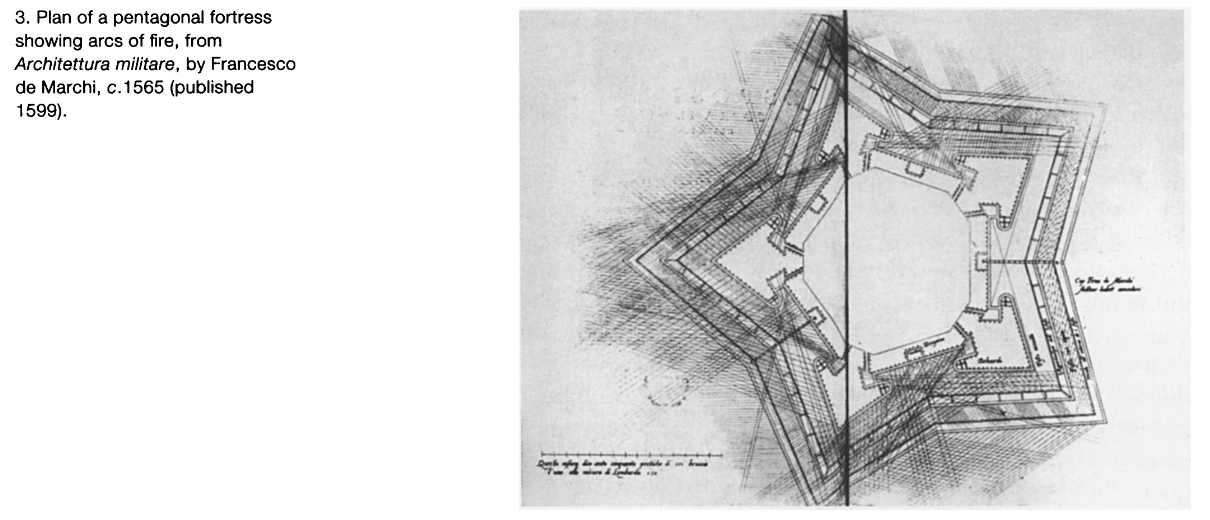
Figure 1: Plan of a pentagonal fortress showing arcs of fire[10]
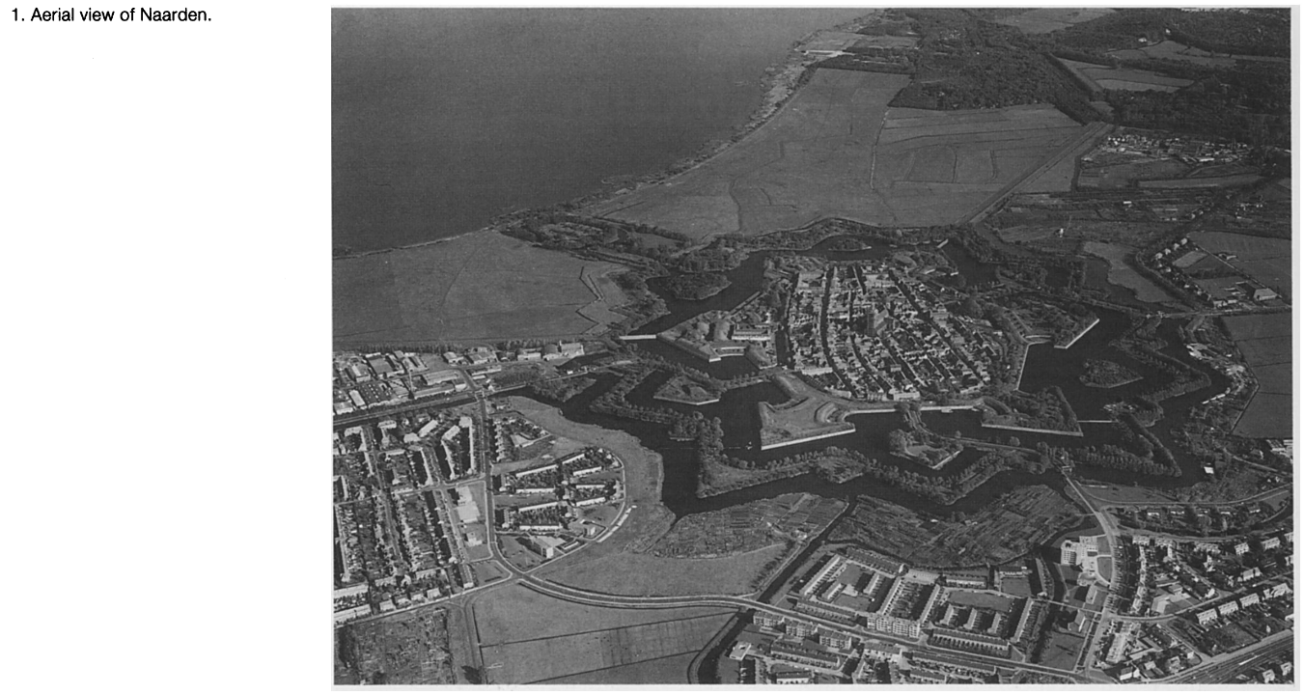
Figure 2: Aerial view of Naarden
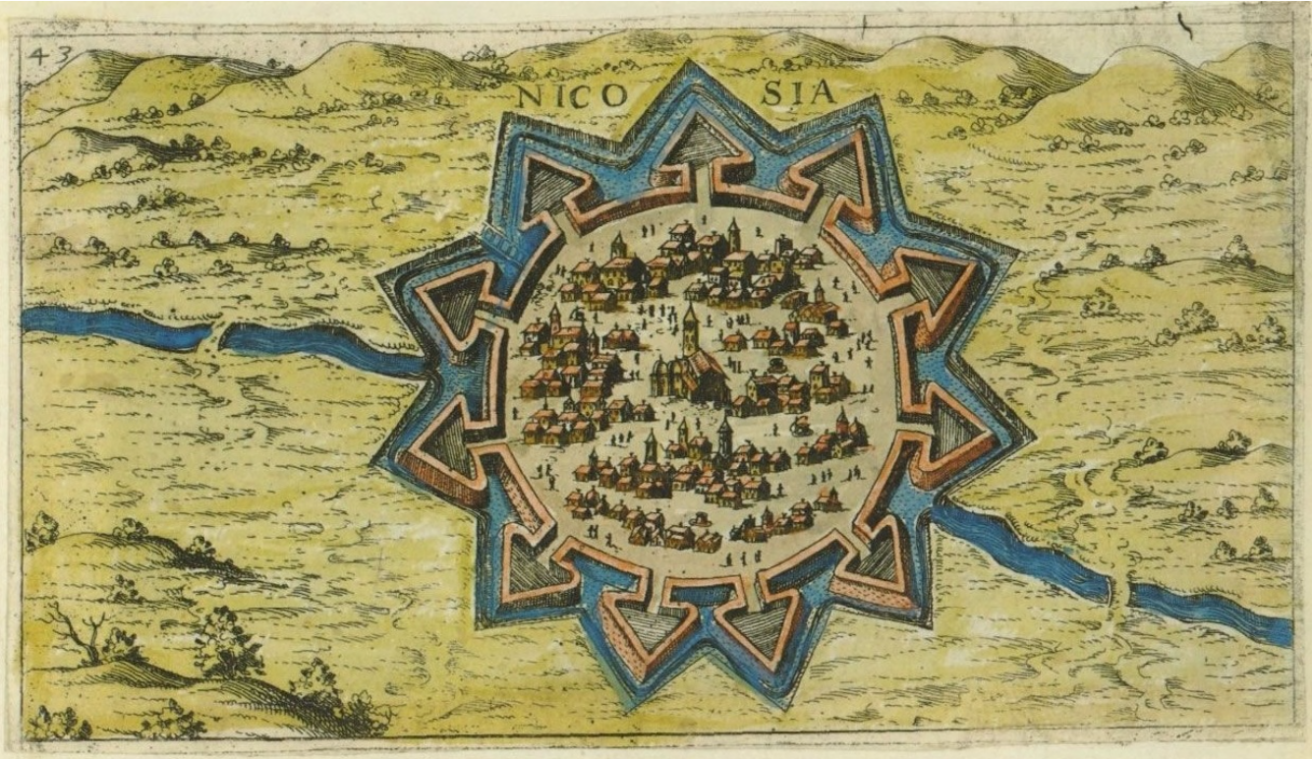
Figure 3: The walls of Nicosia, Cyprus (1567), a typical example of Italian Renaissance military architecture that survives to this day
However, in modern warfare, the fortifications of the late 19th century became cumbersome and ineffective, including temporary structural reinforcement methods, as well as bunkers and trenches. Therefore, we will no longer focus on massive defensive strategies such as the Maginot Line. Instead, we witness the expansion of defensive strategies from specific locations within cities to the territory of nations and beyond. It is worth noting that modern warfare fortifications still represent an extension of the concept of walls.
The next stage in the evolution of defensive architecture is marked by the development of warfare technology: the bomber plane. This compelled traditional fortresses to obsolete and evolve into electronic radar systems. The evolution of radar is closely linked to the development of defensive architecture, as both depend on advancements in technology and the use of geometric principles—a beam of bullets for physical fortifications, and a beam of radio waves for the immaterial radar barrier. [4].
This indicates that defensive walls did not disappear from the battlefield in the new era but instead adopted a new form. After deconstruction, they ultimately transformed into radar systems. Similarly, the geometric design of the star-shaped fortresses, intended to withstand cannon fire, was applied to the geometry of radar systems for countering aerial bombardment. On past battlefields, low walls reinforced with compacted earth allowed the preservation of new types of fortifications, while in contemporary warfare, the immateriality of the electromagnetic spectrum provides better defense through radar. This immaterial defense system redefines the methods of surveillance and unprecedentedly enhances the perceptual capabilities of defensive space in warfare. As notes, the advent of radar has truly endowed modern militaries with an unprecedented sensory capability. On contemporary battlefields, microwave and radio wave frequencies constantly fill the air. Unlike physical structures, these waves are imperceptible even to those present within them [4]. Radar provides the military ability to track moving objects while enhances control over territory and air superiority, expanding dimensions in multiple directions. While it is undeniable that physical fortifications are the most representative defensive structures since the 20th century, radar defense systems, as a new defensive logic born out of the need to counter contemporary offensive threats, are reshaping the landscape of global politics and warfare.
3. Retrospect: reshaping of the environment
The dissolution and reconstruction of defensive architecture are constantly occurring and are not limited to contemporary battlefields. When we look back at the defensive architectural structures of earlier history, it becomes clear that the ability of defensive buildings to control and monitor territories existed all around the world even then.
Indeed, early defensive structures predominantly embraced straightforward geometric forms. However, it is precisely the emphasis on geometric logic that may lead to the neglect of some less noticeable functions of defensive architecture. Beyond their function as tangible physical defenses, these fortifications across different regions also embody numerous principles of defense and spatial control that align with non-aggregate theories. The functions of defensive architecture beyond protecting against external threats are gradually becoming more prominent.
The Great Wall of China delineates the boundaries of its territory by expanding from points to lines. primarily serving to delineate land and enhance surveillance capabilities. In Europe, the defensive strategies of Constantinople not only functioned as physical barriers but also intertwined with religious elements, playing a role in the ruling class's control over the urban population. Together, these examples illustrate how defensive architecture across different regions has historically aimed not only at physical protection but also at establishing spatial control and surveillance over the inhabitants.
The Great Wall was first built during the Warring States period by the State of Chu to defend against invasions from northern nomadic tribes. Subsequently, the other six states of the Warring States period also began constructing their own sections of the Great Wall for the same purpose. as a representative example of ancient defensive architecture, embodies the concept of defense architecture as a boundary. By using simple walls as defensive line to delineate the governed territory, aimed to protect against external enemies. Over time, and with the consolidation of power, this network structure became increasingly complex and complete. The grid-like configuration of the Great Wall of China clearly illustrates the delineation of various political boundaries in antiquity. This control over territorial limits not only restricted the movement of populations but also significantly defined the geographical landscape of the nation.
The development of this defensive architecture played a pivotal role in establishing order and stability within agricultural societies. Beyond providing resistance to the incursions of nomadic tribes, the agrarian communities of the Central Plains, under the control of this defensive system, strengthened their collective power, leading to the formation of a unified dynasty. The continuous construction and enhancement of the Great Wall’s defensive system further bolstered the cohesion and unity of these agricultural societies, thereby reinforcing the establishment of a unified and centralized empire south of the Great Wall.
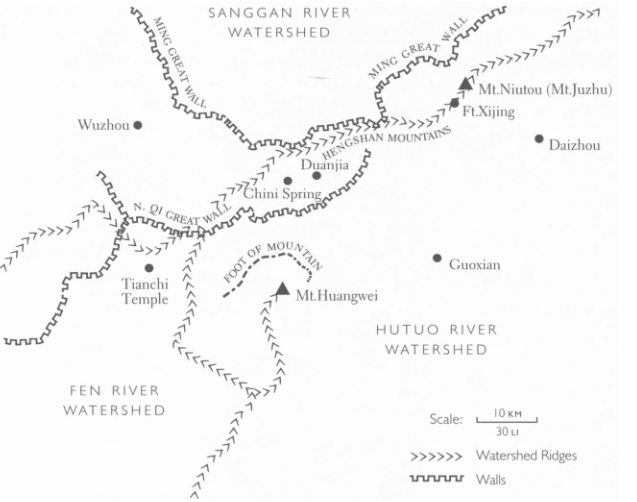
Figure 4: Plan view of great wall
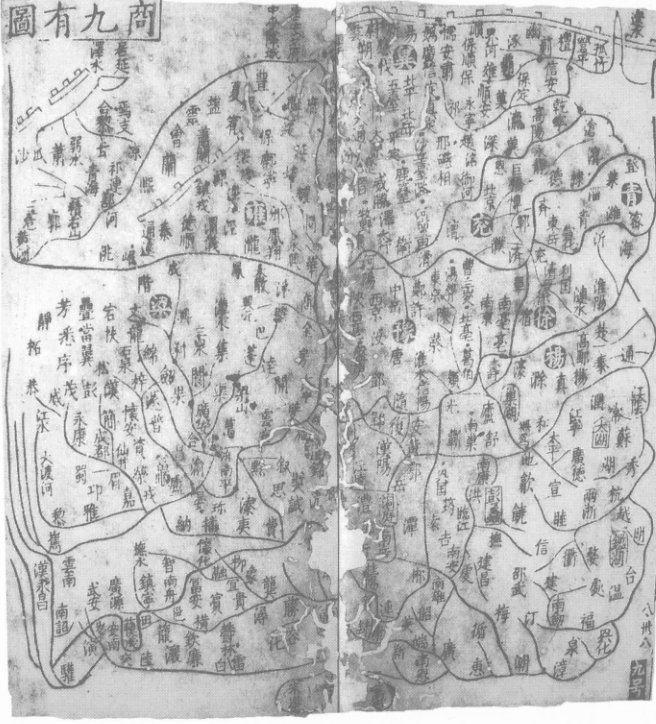
Figure 5: Map of So-dynasty China, with anachronistic depiction of the Great Wall along the northern border [11]
Constantinople was protected by Multi-layered Defense Structure, The Theodosian Walls are a multi-tiered defensive system, consisting of an outer wall and an inner wall, with a moat in between. The design of the multi-layered city walls not only heightened the challenge of an external assault but also structured and defined the internal social order of the city.
During the period of the Theodosian Walls, the primary purpose of the walls was to protect the city. However, they also defined the political, social, and economic landscape of Constantinople, as well as its religious life, becoming venues for ceremonies and urban celebrations. In the Byzantine era, numerous festivities were held at the gate, including the celebrations of the emperor's triumphs and commemorations of sacred events. [5] Beyond these ceremonial activities, the Theodosian Walls had a significant impact on the lives of the city's inhabitants. They played a crucial role in the economy of Constantinople, serving as the city's only land entrance. The defensive architecture of the city naturally took on the functions of trade and customs, while also serving as connecting routes.
In antiquity, the cohesive elements of the walls were intrinsically linked to the emperor and his imperial authority, symbolizing the power of the monarchy. For the common populace, however, the city walls primarily delineated the city's boundaries. As the most prominent symbol of the city, the walls played a central role in its political, economic, and social life, naturally distinguishing the inner and outer realms and highlighting the divide between wealth and poverty. For those residing within Constantinople, the walls marked the periphery of their domain. This influence endures to the present day, with inhabitants living west of the walls often experiencing a sense of isolation. Strolling along the walls reveals the city's diverse lifestyles. In this urban landscape, the impact of fortifications on both spatial organization and traditional customs is undeniably significant.
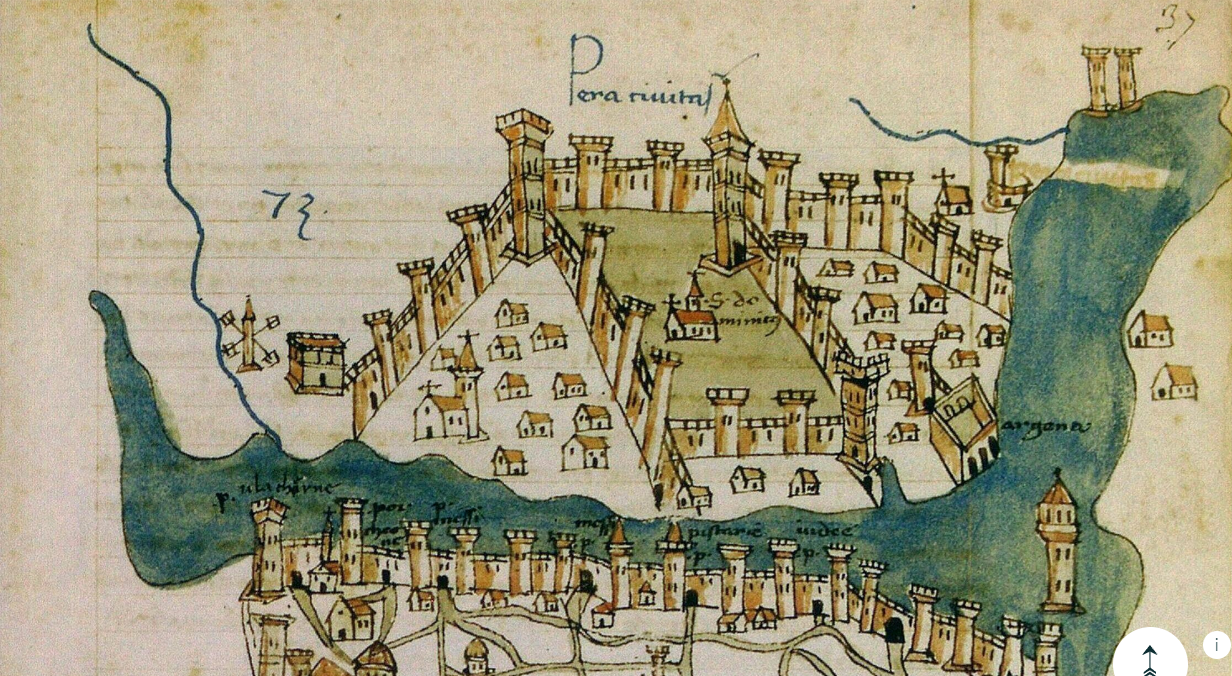
Figure 6: Depiction of the Fort of Galata [12]
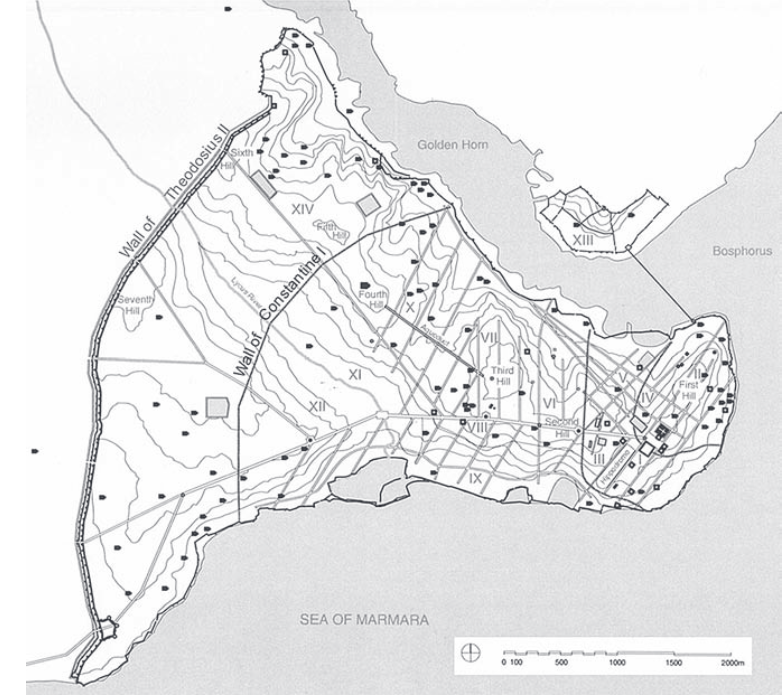
Figure 7: Map of Byzantine Constantinople. Rectangular structures with apses to the east represent churches (drawing Jelena Bogdanovi')
4. Conclusion
The evolution of defensive architectural techniques has engendered a significant defensive paradigm, one that was previously constrained by geometric considerations and the limitations imposed by the surrounding terrain. This evolution marks a proactive defense process embedded within the built environment. However, this emphasis on physical attributes often overshadowed other pertinent characteristics of fortifications.
In contemporary contexts, defensive architecture has transcended the mere design of physical structures, transforming into a sophisticated technology for spatial surveillance. This shift has illuminated a previously neglected historical narrative, revealing that modern fortifications are not solely synonymous with warfare. Rather, the defensive mindset has infiltrated various facets of daily life, functioning persistently within complex defense systems that operate beyond the confines of geometric regulations, thereby monitoring human habitation and safeguarding against potential threats.
In our current information society, the regulation of information emerges as a salient expression of defensive thinking. It employs a range of exploratory methodologies and extensive logistical networks to counteract potential hazards inherent in the information landscape, thereby impacting numerous aspects of personal existence. Contemporary defensive structures leverage both material and immaterial, geometric and non-geometric strategies to control urban environments and delineate political boundaries, while concurrently safeguarding individual information security from encroachments. Historically, these elements have constituted a fundamental aspect of the interplay between society, power, and politics. The adept application of defensive design principles in contemporary society facilitates both the passive mitigation of future risks and the proactive execution of precise interventions against identified threats.
References
[1]. Andersson R (2014) Hunter and prey: Patrolling clandestine migration in the Euro-African borderlands. Anthropological Quarterly .
[2]. Bousquet A (2018) The Eye of War: Military Perception from the Telescope to the Drone. Minneapolis: University of Minnesota Press.
[3]. Chamayou G (2012) Manhunts: A Philosophical History. Trans. Rendall S. Princeton, NJ: Princeton University Press.
[4]. DeLanda M (1991) War in the Age of Intelligent Machines. New York: Zone.
[5]. Butuner, F. (2014). Tradition Along The Edge: The Land Walls of Istanbul. Traditional Dwellings and Settlements Review, 26(1), 22–23.
[6]. Kingra M (1993) The ‘trace italienne’ and the military revolution during the Eighty Years’ War. The Journal of Military History .
[7]. Lynn JA (1991) The ‘trace italienne’ and the growth of armies: The French case. Journal of Military History .
[8]. Maier C (2016) Once Within Borders: Territories of Power, Wealth, and Belonging Since 1500. Cambridge, MA: Harvard University Press.
[9]. Parker G (1976) The ‘military revolution’, 1560–1660: A myth? Journal of Modern History 48(2).
[10]. Francescode Marchi (1599) Architettura militarec.1565
[11]. Song ben Lidai dili zhizhangtu, 18-19.
[12]. Cristoforo Buondelmonte (1422) Map.
Cite this article
Tang,R. (2025). On Defensive Architecture: The Expansion of Boundaries and the Reshaping of the Environment. Lecture Notes in Education Psychology and Public Media,92,14-22.
Data availability
The datasets used and/or analyzed during the current study will be available from the authors upon reasonable request.
Disclaimer/Publisher's Note
The statements, opinions and data contained in all publications are solely those of the individual author(s) and contributor(s) and not of EWA Publishing and/or the editor(s). EWA Publishing and/or the editor(s) disclaim responsibility for any injury to people or property resulting from any ideas, methods, instructions or products referred to in the content.
About volume
Volume title: Proceedings of the 3rd International Conference on Social Psychology and Humanity Studies
© 2024 by the author(s). Licensee EWA Publishing, Oxford, UK. This article is an open access article distributed under the terms and
conditions of the Creative Commons Attribution (CC BY) license. Authors who
publish this series agree to the following terms:
1. Authors retain copyright and grant the series right of first publication with the work simultaneously licensed under a Creative Commons
Attribution License that allows others to share the work with an acknowledgment of the work's authorship and initial publication in this
series.
2. Authors are able to enter into separate, additional contractual arrangements for the non-exclusive distribution of the series's published
version of the work (e.g., post it to an institutional repository or publish it in a book), with an acknowledgment of its initial
publication in this series.
3. Authors are permitted and encouraged to post their work online (e.g., in institutional repositories or on their website) prior to and
during the submission process, as it can lead to productive exchanges, as well as earlier and greater citation of published work (See
Open access policy for details).
References
[1]. Andersson R (2014) Hunter and prey: Patrolling clandestine migration in the Euro-African borderlands. Anthropological Quarterly .
[2]. Bousquet A (2018) The Eye of War: Military Perception from the Telescope to the Drone. Minneapolis: University of Minnesota Press.
[3]. Chamayou G (2012) Manhunts: A Philosophical History. Trans. Rendall S. Princeton, NJ: Princeton University Press.
[4]. DeLanda M (1991) War in the Age of Intelligent Machines. New York: Zone.
[5]. Butuner, F. (2014). Tradition Along The Edge: The Land Walls of Istanbul. Traditional Dwellings and Settlements Review, 26(1), 22–23.
[6]. Kingra M (1993) The ‘trace italienne’ and the military revolution during the Eighty Years’ War. The Journal of Military History .
[7]. Lynn JA (1991) The ‘trace italienne’ and the growth of armies: The French case. Journal of Military History .
[8]. Maier C (2016) Once Within Borders: Territories of Power, Wealth, and Belonging Since 1500. Cambridge, MA: Harvard University Press.
[9]. Parker G (1976) The ‘military revolution’, 1560–1660: A myth? Journal of Modern History 48(2).
[10]. Francescode Marchi (1599) Architettura militarec.1565
[11]. Song ben Lidai dili zhizhangtu, 18-19.
[12]. Cristoforo Buondelmonte (1422) Map.









